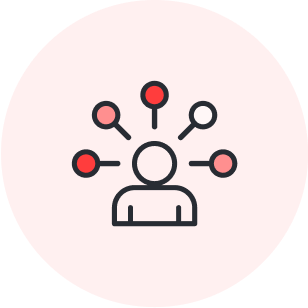
Maximize brainstorming potential with the Charette process
Reading time: about 6 min
We tend to think of brainstorming meetings as being limited to the number of people who can fit in a single room, but brainstorming sometimes requires a much, much broader audience: think entire countries. Turning to the public for ideas can either lead to brilliance (such as the name of the robotic British boat Boaty McBoatface chosen by the internet) or disaster. And it’s not hard to imagine why—getting a small group of friends to agree on where to eat dinner is difficult enough, let alone getting an entire neighborhood to decide on what to do with a vacant lot.
The Charette process is designed to bring together stakeholders, experts, and sometimes the public to generate ideas and solutions for a specific challenge or problem. There are no limits to how many people can participate in the Charette process, and while it’s typically used for design problems, it can also be used in other use cases.
What is the Charette process?
The Charette process works through a structured series of workshops to generate and refine design ideas and solutions for a project or problem. After a brief overview of how the Charette process works, the problem is posited to the audience with a background and context of the issue at hand. Then brainstorming begins. There’s discussion and critiques and a type of prototype development, then a presentation of the proposed solutions with reviews.
When to use the Charette in your meetings or brainstorming sessions
As we’ve hinted at, the Charette process isn’t appropriate for every problem. It’s best when you need to tackle complex design challenges or generate innovative solutions collaboratively. Some examples are:
-
Architectural projects, urban initiatives, or community development
-
An innovative solution to a complex problem
-
Concept development that needs diverse perspectives
-
Anything requiring a ton of ideas in a short time span
-
Project kickoffs
-
Rapid prototyping
If your key challenge fits into any of those above ideas, the Charette process may work. Essentially, it’s beneficial whenever you need to leverage collective creativity, foster collaboration among diverse stakeholders, accelerate decision-making, and generate innovative solutions to complex challenges. Before engaging in the process, ask yourself if more perspectives would help find a solution. If so, go for it!
Some instances where it may not be a great idea:
-
When you’re working on a tight timeline
-
When the project itself has very rigid constraints
-
When the problem is straightforward and doesn’t need a creative solution
-
If the problem is too technical
-
When the project requires confidentiality
If, for instance, you’re working on proprietary, confidential software, gaining the perspective of your community wouldn’t be appropriate, and you shouldn’t attempt the Charette process.
Steps to running a Charette meeting
Here’s how it works:
Define the problem
The problem needs to be identified first, and it needs to be significant enough to warrant being solved by a broad group. A good candidate for the Charette process would be soliciting ideas for a neighborhood housing project. A poor idea for Charette protocol would be deciding what to eat for lunch. Clearly state what design challenge or problem needs to be addressed.
Invite participants
This is really where the Charette process shines because you don’t need to limit yourself at this stage. Invite anyone who would have an opinion or viewpoint related to the problem. It could be community members and architects, representatives from the government, or even clients. Figure out who would have some sort of stake in the problem you’re hoping to solve or would have related knowledge, and then send invitations.
Gather resources
The Charette process doesn’t have to happen in person. In fact, you’ll have access to broader knowledge if participants can be located anywhere in the world. You’ll just need to ensure you’ll have resources for every style of participant. If participants are remote, they’ll need the correct technical setup. If they’re in person, your participants may require anything from modeling clay to maps to laptops.
Kick it off
Welcome everyone, then explain the purpose of the Charette process and what your expectations are. Set expectations for collaboration and active participation and define rules. Provide a comprehensive overview of the identified problem.
Begin brainstorming
You may wish to go ahead and let everyone brainstorm on their own, or you can divide participants into smaller teams or groups to work on specific aspects of the design challenge. Be sure to foster cross-disciplinary collaboration and communication among team members by defining who will be in the small groups.
Get feedback
Allow participants to present their ideas. Encourage participants to critique each other’s concepts and suggest improvements. Then, refine and develop ideas based on the feedback from group discussions and reviews. Emphasize the importance of iterative refinement when evolving concepts into more robust design solutions.
Consolidate
Convene synthesis sessions to consolidate themes, identify common threads, and integrate diverse perspectives into cohesive design concepts. Encourage participants to connect ideas and explore integrated solutions. For example, if one group has an idea for a community garden but another group prefers a community coffee shop, what about a coffee shop with a garden? Combine and iterate.
Present
Each team should present their final models or ideas. Presentations should include sketches, diagrams, and explanations of the design rationale. Initiate discussions to refine concepts further and gain consensus on preferred directions for further development.
Conclude and document
Hold a reflective session for participants to discuss accomplishments, lessons learned, and insights gained during the process. Capture critical takeaways and observations.
Make an action plan
Develop an action plan based on your decisions in the Charette meeting. Outline the next steps, responsibilities, and timelines for further design development or project implementation. Be sure to communicate the meeting outcomes and define roles, expectations, and follow-up actions.
Benefits of using the Charette procedure
So, what are the benefits of using this brainstorming process with a larger group? There are many!
-
Get participants from diverse backgrounds to foster a broader perspective
-
Stimulate creativity
-
Rapidly iterate and develop ideas
-
Gain stakeholder buy-in
-
Make decisions quickly
-
Improve design quality
Those are the upsides. But with a larger group comes some downsides, too:
-
It’s time and resource intensive
-
Some voices tend to dominate the conversation
-
It’s often challenging to facilitate
-
There’s a more significant potential for conflict
-
Ideas often come at the expense of execution
-
Greater risk of scope creep
Lucidspark can help
If the downsides are scaring you off, we’re here to help. Use Breakout Boards to help facilitate a Charette-style brainstorm session in Lucidspark. Plus, using our facilitated brainstorming template will help wrangle the chaos. Our brainwriting template allows you to quickly and neatly capture ideas as they come in.
The Charette procedure is time-consuming and difficult to implement, but it’s often worth it. It’s an especially powerful tool for fostering creativity, collaboration, and innovation in design projects. By being aware of the challenges this process presents, you can more easily mitigate them and harness their powerful advantages.

Learn more about how Lucidspark can kickstart innovation and support brainstorming sessions of all kinds.
Go nowAbout Lucidspark
Lucidspark, a cloud-based virtual whiteboard, is a core component of Lucid Software's Visual Collaboration Suite. This cutting-edge digital canvas brings teams together to brainstorm, collaborate, and consolidate collective thinking into actionable next steps—all in real time. Lucid is proud to serve top businesses around the world, including customers such as Google, GE, and NBC Universal, and 99% of the Fortune 500. Lucid partners with industry leaders, including Google, Atlassian, and Microsoft. Since its founding, Lucid has received numerous awards for its products, business, and workplace culture. For more information, visit lucidspark.com.
Related articles
What to do after a brainstorming session
Knowing what to do after a brainstorming session is often more important than getting together to ideate in the first place. If you want to turn a brainstorm into workable ideas, here are some great ways to get started.
7 tips for improving your brainstorming sessions
With a few must-haves and some basic guidelines, you’ll learn how to increase the effectiveness of your brainstorming meetings in no time.
Tips and tricks for gathering and organizing feedback in Lucidspark
In this article, we’ll walk you through how to take all of your brainstorm components and transform them into actionable, organized tasks.
5 group brainstorming techniques for winning teams
Turn your brainstorming woes into wins with these five group brainstorming techniques and best practices.
